The System Filter form in SalesPad Mobile allows administrator users to add filtering capabilities to different objects that are sent to the mobile client device.
Navigate to the Security Editor and click the System Filter Editor box in the grid list of enabled forms.
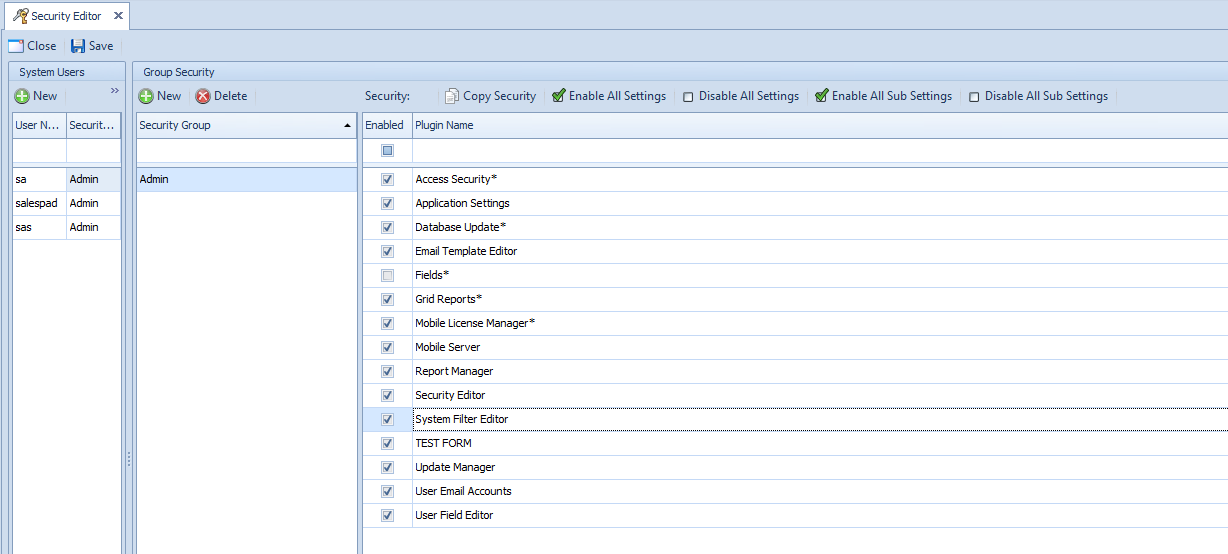
Navigating System Filter Types
System Filters come in three forms: Global, Group and User. The functionality of each is explained below:
Global Filters
Global filters apply to every user. They are primarily used to hide sensitive information, such as Item Cost, from the mobile client.
Group Filters
Group filters apply to every user inside a group. They are the most widely-used filters, as they apply to organization-wide groupings. For example, a group might have a filter stating they can only access sales documents that have their login under sales representative.
User Filters
User filters apply to individual users. They are primarily used as an alternative to applying a filter to an entire group, for example in cases where users want to prevent one member of a sales team from seeing certain item types.
Step 1
Click the System Filter Editor icon in the ribbon.

Step 2
Select New from the form’s header.
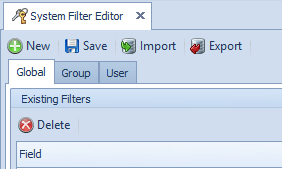
Step 3
Create a type of System Filter (Global, Group, or User).

Step 3.A
Select a group to apply the filter to.

Step 3.B
Select a user to apply the filter to.
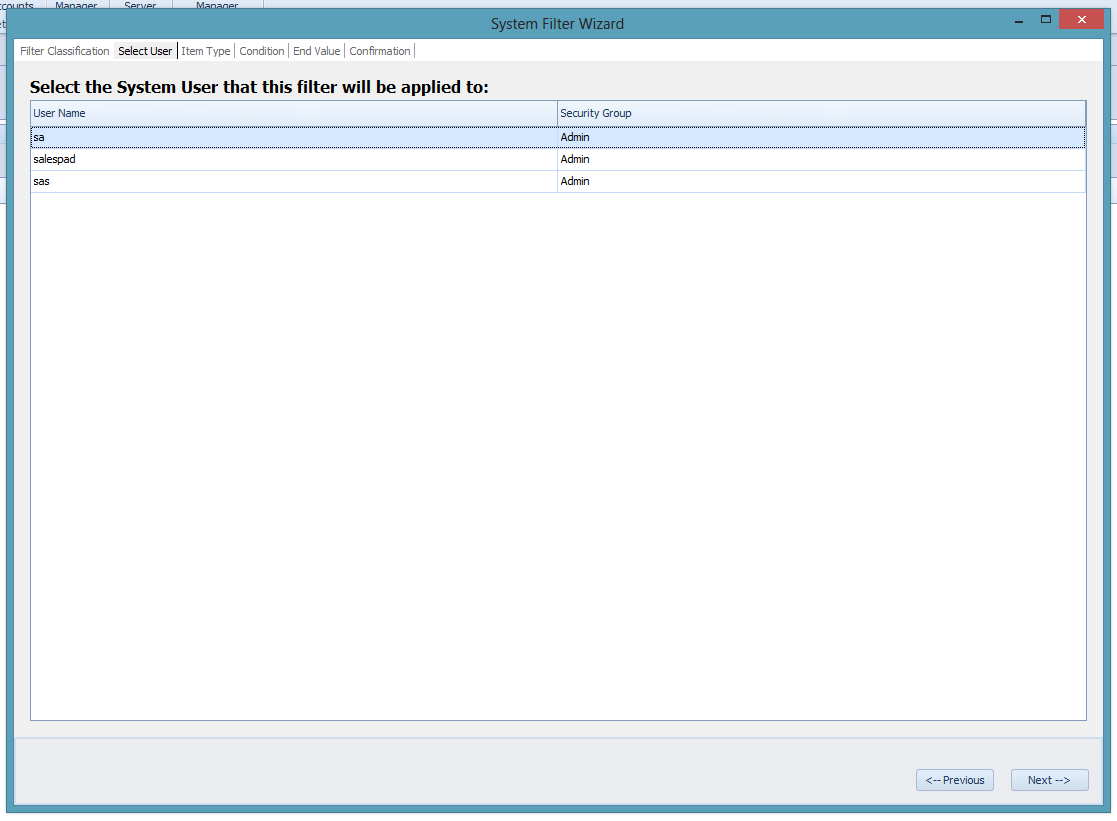
Step 4
Select an object and field to apply the filter to.
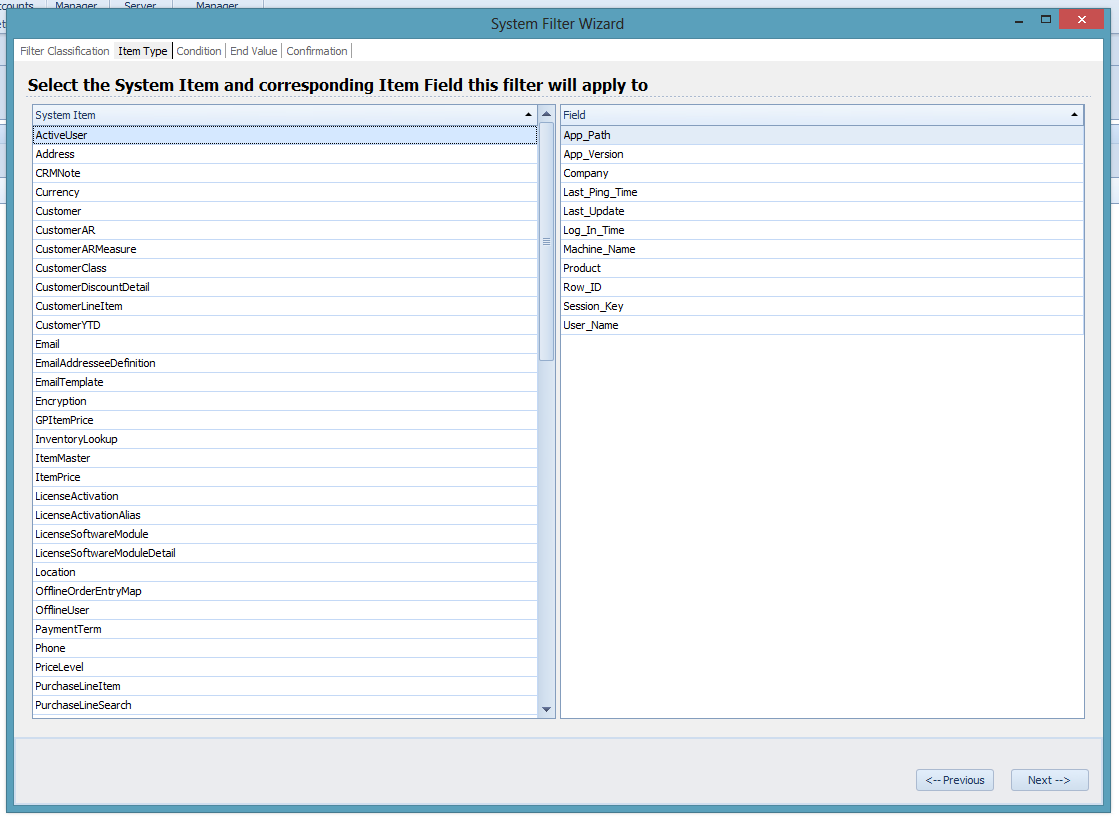
Step 5
Select how you want items to be filtered.
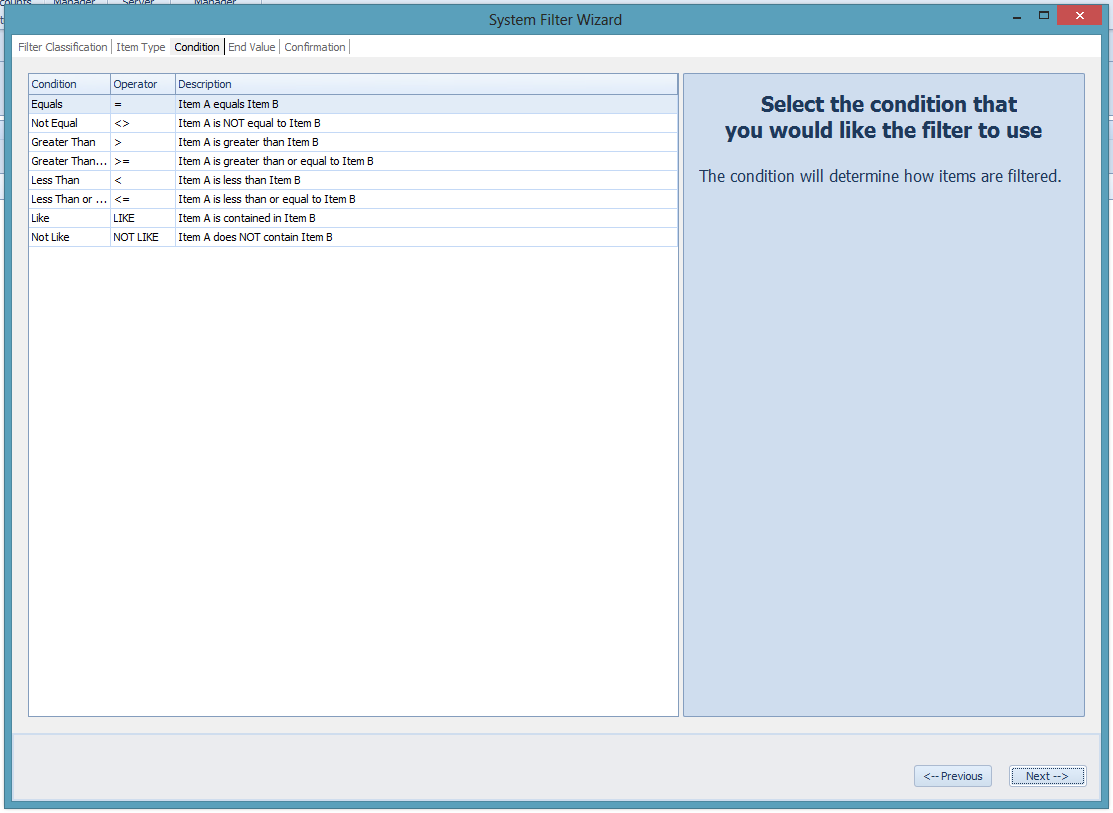
You can select the following conditions for the filter to use:
Equals - This will force only objects that have a column equal to the end value to be shown.
Not Equal - This will force only objects that don’t have a column equal to the end value to be shown.
Greater Than - This will force only objects that have a column greater than the end value to be shown.
Greater Than or Equal To - This will force only objects that have a column greater than or equal to the end value to be shown.
Less Than - This will force only objects that have a column less than the end value to be shown.
Less Than or Equal To - This will force only objects that have a column less than or equal to the end value to be shown.
Like - This will force only objects with a column that contains the end value to be shown.
Not Like - This will force only objects with a column that doesn’t contain the end value to be shown.
Step 6
Select what the end value will be between a custom value and a user- or group-specific value.
A custom value will apply the filter to only the value entered. Use this in instances where you don’t have a matching System User or System Group end value to work from.
A user or group specific value will apply the filter to the currently logged in mobile user’s corresponding table.
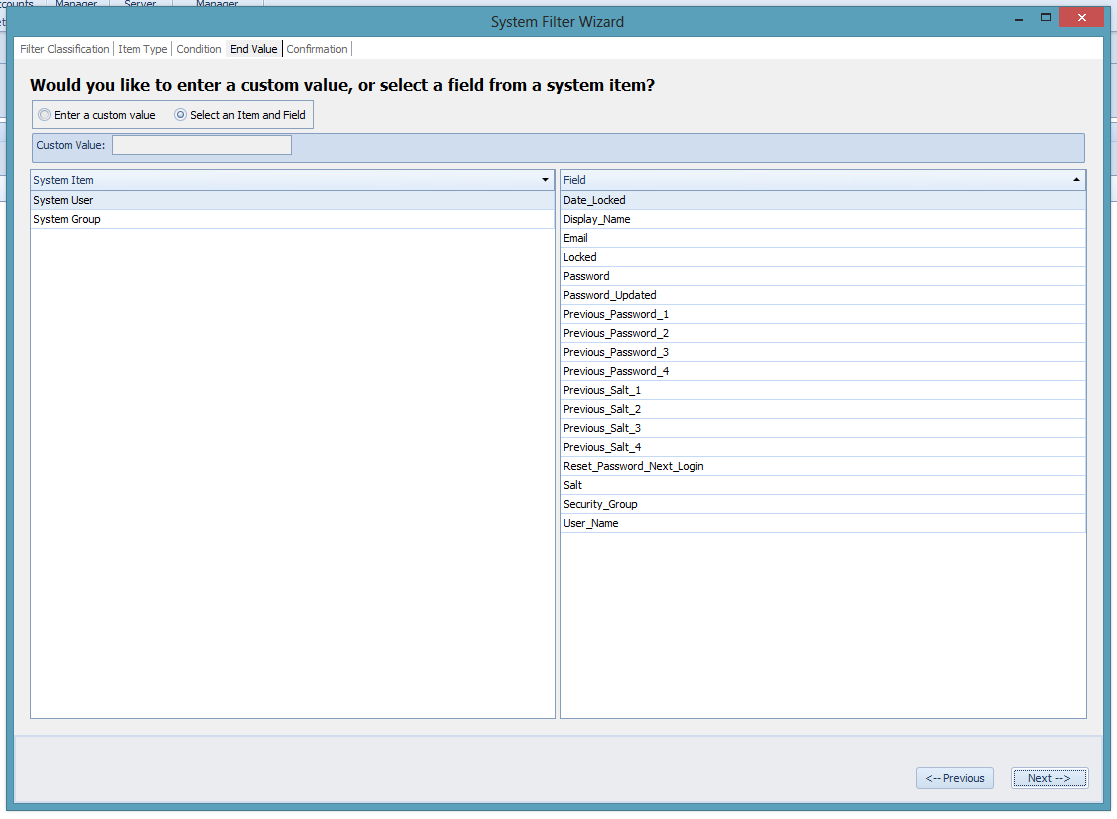
Step 7
This page will confirm as best it can what the system filter will do to the table. Clicking Finish will save the System Filter for later use.
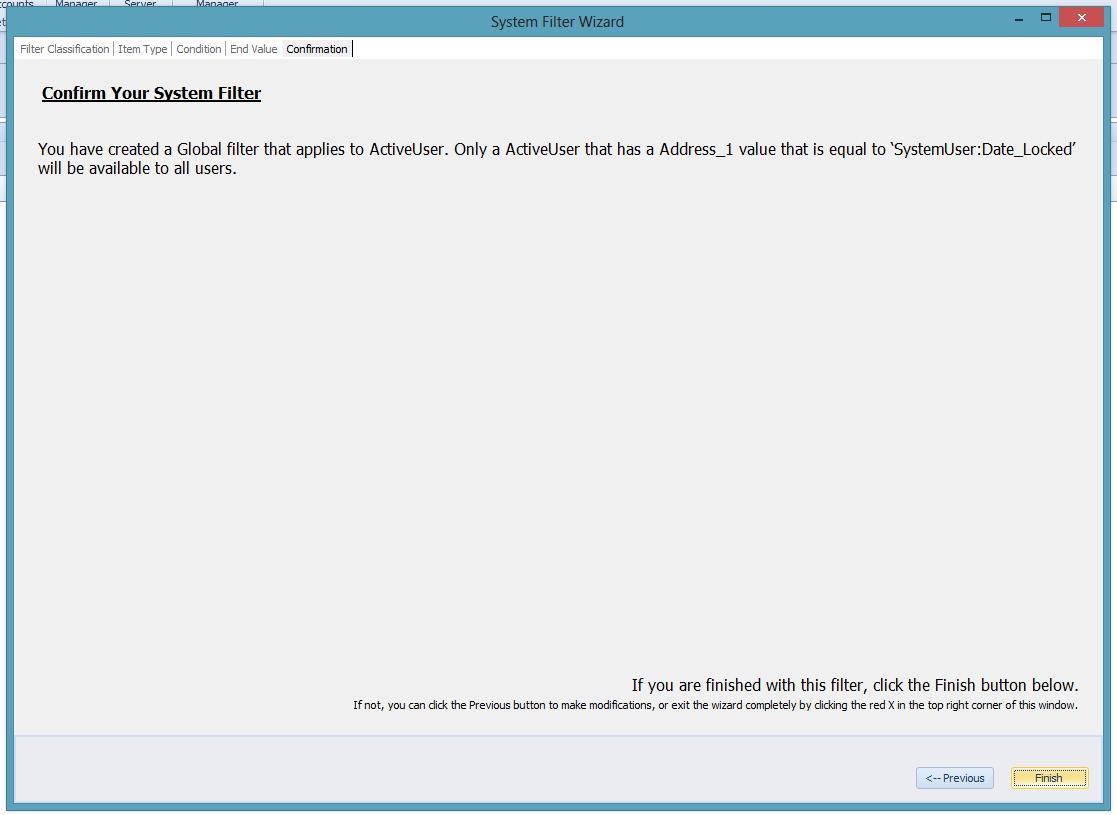
Interpreting Existing System Filters

Each existing system filter is explained below:
Field Column
Represents the column being filtered.
Item Column
Represents the object being filtered.
Condition
Represents how the end value applies to the Field and Item.
End Value or End Item/End Field
Represents what the Field and Item apply to.
Filter Target
Represents what group the filter applies to. In the Group tab, this is the name of the group. Likewise, in the User tab, this is the name of the user.

Below are solutions to two potential problems:
The filter does the exact opposite of what I expected it to do.
The quickest way to evaluate how the filter is working is to read the confirmation page when you make the system filter. It tries to describe as verbose as possible what the system filter will do to associated queries.
The filter locked me out of the system.
This can occur if filters are applied to SalesPad system tables. The easiest way to fix this issue is to delete the culprit row in the database’s SPGPM.SystemFilter table.
SalesPad Support
Comments